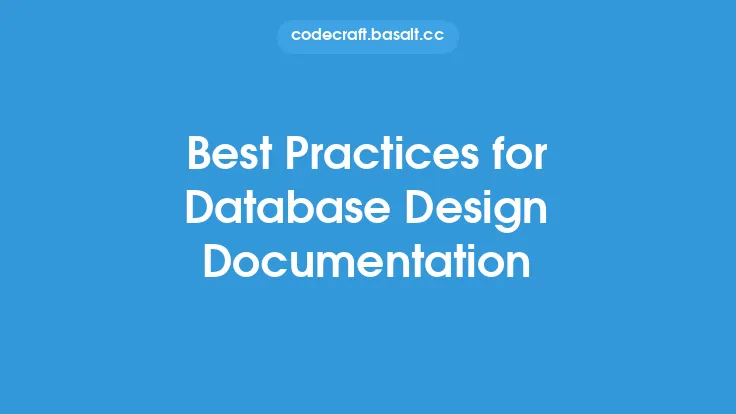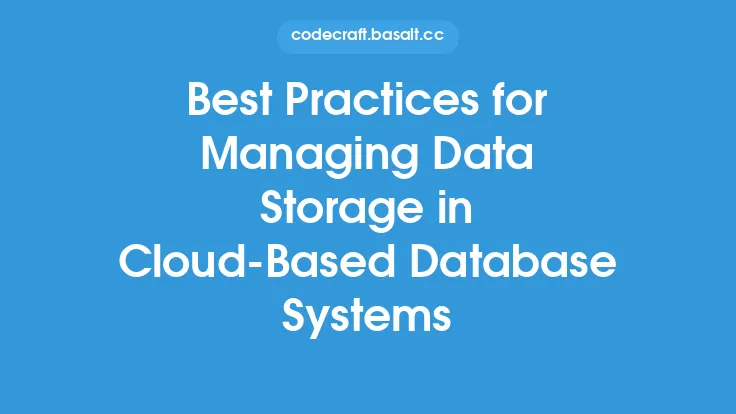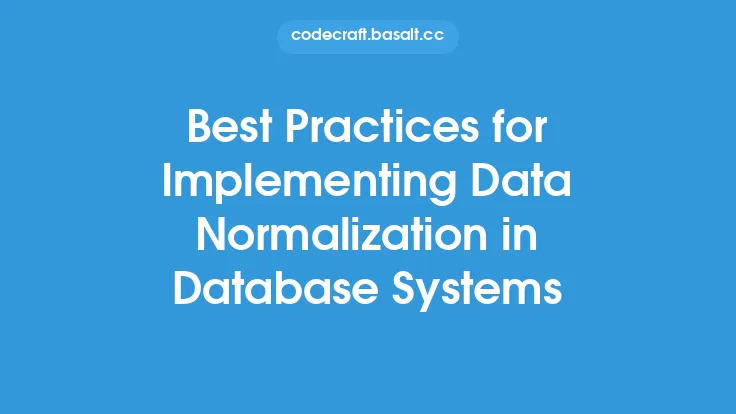Database authentication is a critical component of database security, as it ensures that only authorized users can access and manipulate the data stored in the database. A robust authentication mechanism is essential to prevent unauthorized access, data breaches, and other security threats. In this article, we will discuss the best practices for secure database authentication, highlighting the key principles, techniques, and technologies that can help protect your database from unauthorized access.
Introduction to Database Authentication
Database authentication is the process of verifying the identity of users, applications, or services that attempt to access the database. The authentication process typically involves a combination of username, password, and other credentials, such as biometric data, smart cards, or one-time passwords. The goal of database authentication is to ensure that only legitimate users can access the database, while preventing unauthorized access, data tampering, and other malicious activities.
Authentication Protocols and Mechanisms
There are several authentication protocols and mechanisms that can be used to secure database authentication, including:
- Kerberos: a widely used authentication protocol that provides secure authentication and single sign-on capabilities.
- LDAP (Lightweight Directory Access Protocol): a protocol used for authenticating and authorizing users, as well as managing user identities and access control.
- SQL Server Authentication: a mechanism used by Microsoft SQL Server to authenticate users, which can be configured to use Windows Authentication, SQL Server Authentication, or a combination of both.
- Multi-factor authentication (MFA): a security process that requires users to provide multiple forms of verification, such as a password, fingerprint, or smart card, to access the database.
Password Management Best Practices
Password management is a critical aspect of database authentication, as weak or compromised passwords can provide an entry point for attackers. The following password management best practices can help improve database security:
- Password complexity: require strong, complex passwords that include a mix of uppercase and lowercase letters, numbers, and special characters.
- Password rotation: implement a regular password rotation policy to ensure that passwords are changed frequently.
- Password storage: store passwords securely using a salted hash, such as bcrypt, PBKDF2, or Argon2.
- Password transmission: transmit passwords securely using encryption protocols, such as SSL/TLS.
Secure Authentication Techniques
Several secure authentication techniques can be used to enhance database authentication, including:
- Challenge-response authentication: a technique that requires users to respond to a challenge, such as a mathematical problem or a CAPTCHA, to verify their identity.
- One-time passwords (OTPs): a technique that generates a unique password for each login attempt, which can be sent to the user via SMS, email, or a mobile app.
- Biometric authentication: a technique that uses biometric data, such as fingerprints, facial recognition, or voice recognition, to verify user identity.
- Smart card authentication: a technique that uses a smart card, such as a credit card or a USB token, to store and verify user credentials.
Authentication and Authorization
Authentication and authorization are two distinct but related concepts in database security. Authentication verifies the identity of users, while authorization determines what actions they can perform on the database. The following best practices can help ensure that authentication and authorization are properly integrated:
- Role-based access control (RBAC): implement RBAC to assign users to roles, which define the actions they can perform on the database.
- Least privilege principle: grant users the minimum privileges required to perform their tasks, to reduce the risk of unauthorized access or data tampering.
- Separation of duties: separate duties and responsibilities among users, to prevent a single user from having too much control over the database.
Database Authentication Tools and Technologies
Several tools and technologies can be used to implement and manage database authentication, including:
- Database management systems (DBMS): most DBMS, such as Oracle, Microsoft SQL Server, and MySQL, provide built-in authentication mechanisms and tools.
- Identity and access management (IAM) systems: IAM systems, such as Okta, Azure Active Directory, or Google Cloud Identity, provide a centralized platform for managing user identities and access control.
- Authentication frameworks: authentication frameworks, such as OAuth, OpenID Connect, or SAML, provide a standardized way of implementing authentication and authorization.
Conclusion
Database authentication is a critical component of database security, and implementing best practices can help protect your database from unauthorized access and other security threats. By using secure authentication protocols and mechanisms, managing passwords effectively, and implementing secure authentication techniques, you can ensure that only authorized users can access and manipulate your database. Additionally, integrating authentication and authorization, and using database authentication tools and technologies, can help provide an additional layer of security and compliance.





